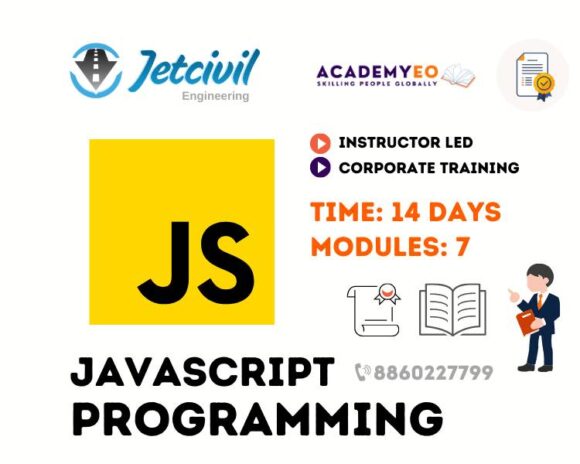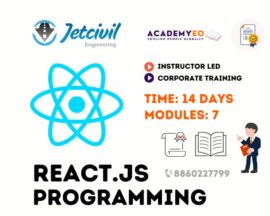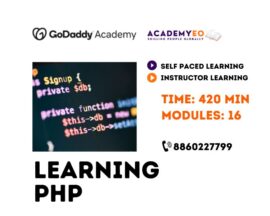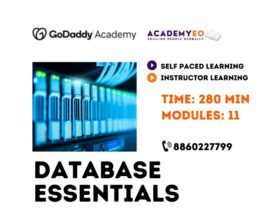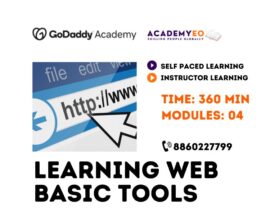Mastering JavaScript The Ultimate Series
₹ 10,000.00
- Time: 14 Days (Daily 1 hr)
- Lectures: 7 Modules
- Instructor Led Course
- Learning from Academyeo
- Certificate from Academyeo
- Mini Project & Assessment

- Description
- Curriculum
- Instructor
Description
Mastering JavaScript will be your companion as you master JavaScript and build innovative web applications. To begin with, you will get familiarized with the language constructs and how to make code easy to organize. You will gain a concrete understanding of variable scoping, loops, and best practices on using types and data structures, as well as the coding style and recommended code organization patterns in JavaScript. This Mastering Javascript course will also teach you how to use arrays and objects as data structures. You will graduate from intermediate-level skills to advanced techniques as you come to understand crucial language concepts and design principles. You will learn about modern libraries and tools so you can write better code.
- JavaScript is the world’s most popular programming language.
- JavaScript is the programming language of the Web.
- JavaScript is easy to learn.
- This tutorial will teach you JavaScript from basic to advanced.
JavaScript (/ˈdʒɑːvəˌskrɪpt/),[6] often abbreviated as JS, is a programming language that conforms to the ECMAScript specification.[7] JavaScript is high-level, often just-in-time compiled, and multi-paradigm. It has curly-bracket syntax, dynamic typing, prototype-based object-orientation, and first-class functions.
Alongside HTML and CSS, JavaScript is one of the core technologies of the World Wide Web.[8] JavaScript enables interactive web pages and is an essential part of web applications. The vast majority of websites use it for client-side page behavior,[9] and all major web browsers have a dedicated JavaScript engine to execute it.
As a multi-paradigm language, JavaScript supports event-driven, functional, and imperative programming styles. It has application programming interfaces (APIs) for working with text, dates, regular expressions, standard data structures, and the Document Object Model (DOM). However, ECMAScript itself does not include any input/output (I/O), such as networking, storage, or graphics facilities, as the host environment (usually a web browser) provides those APIs.
JavaScript engines were originally used only in web browsers, but they are now embedded in some servers, usually via Node.js. They are also embedded in a variety of applications created with frameworks such as Electron and Cordova.
Although there are similarities between JavaScript and Java, including language name, syntax, and respective standard libraries, the two languages are distinct and differ greatly in design. Source: Wikipedia
Curriculum
- Getting Started
- Basics
- Operators
- Control Flow
- Objects
- Arrays
- Functions
JavaScript, often abbreviated as JS, is a programming language that conforms to the ECMAScript specification. JavaScript is high-level, often just-in-time compiled, and multi-paradigm. It has curly-bracket syntax, dynamic typing, prototype-based object-orientation, and first-class functions”
Instructor
Jaswinder Singh – Post Graduate M.tech Degree Holder in Data Science, Machine Learning

